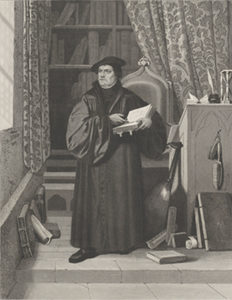3.1: Introduction
- Page ID
- 164079
\( \newcommand{\vecs}[1]{\overset { \scriptstyle \rightharpoonup} {\mathbf{#1}} } \)
\( \newcommand{\vecd}[1]{\overset{-\!-\!\rightharpoonup}{\vphantom{a}\smash {#1}}} \)
\( \newcommand{\id}{\mathrm{id}}\) \( \newcommand{\Span}{\mathrm{span}}\)
( \newcommand{\kernel}{\mathrm{null}\,}\) \( \newcommand{\range}{\mathrm{range}\,}\)
\( \newcommand{\RealPart}{\mathrm{Re}}\) \( \newcommand{\ImaginaryPart}{\mathrm{Im}}\)
\( \newcommand{\Argument}{\mathrm{Arg}}\) \( \newcommand{\norm}[1]{\| #1 \|}\)
\( \newcommand{\inner}[2]{\langle #1, #2 \rangle}\)
\( \newcommand{\Span}{\mathrm{span}}\)
\( \newcommand{\id}{\mathrm{id}}\)
\( \newcommand{\Span}{\mathrm{span}}\)
\( \newcommand{\kernel}{\mathrm{null}\,}\)
\( \newcommand{\range}{\mathrm{range}\,}\)
\( \newcommand{\RealPart}{\mathrm{Re}}\)
\( \newcommand{\ImaginaryPart}{\mathrm{Im}}\)
\( \newcommand{\Argument}{\mathrm{Arg}}\)
\( \newcommand{\norm}[1]{\| #1 \|}\)
\( \newcommand{\inner}[2]{\langle #1, #2 \rangle}\)
\( \newcommand{\Span}{\mathrm{span}}\) \( \newcommand{\AA}{\unicode[.8,0]{x212B}}\)
\( \newcommand{\vectorA}[1]{\vec{#1}} % arrow\)
\( \newcommand{\vectorAt}[1]{\vec{\text{#1}}} % arrow\)
\( \newcommand{\vectorB}[1]{\overset { \scriptstyle \rightharpoonup} {\mathbf{#1}} } \)
\( \newcommand{\vectorC}[1]{\textbf{#1}} \)
\( \newcommand{\vectorD}[1]{\overrightarrow{#1}} \)
\( \newcommand{\vectorDt}[1]{\overrightarrow{\text{#1}}} \)
\( \newcommand{\vectE}[1]{\overset{-\!-\!\rightharpoonup}{\vphantom{a}\smash{\mathbf {#1}}}} \)
\( \newcommand{\vecs}[1]{\overset { \scriptstyle \rightharpoonup} {\mathbf{#1}} } \)
\( \newcommand{\vecd}[1]{\overset{-\!-\!\rightharpoonup}{\vphantom{a}\smash {#1}}} \)
Week 2: 450 – 1750 Renaissance and Reformation
Introduction
The 1600s and 1700s were a time of profound religious, intellectual, and political turmoil across the globe. In Europe, the Protestant Reformation, which challenged the religious and political power of the Catholic Church, led to the Thirty Years’ War in the early 1600s. The Thirty Years’ War devastated much of Central Europe and led to profound divisions between Catholic and Protestant political states. In Africa and Asia, Islam continued to spread southward and eastward through trade networks, population migrations, and the activities of missionaries.
In this unit, we will examine the interaction between religious and political beliefs in the 1600s and 1700s and look at how these ideas reshaped political, economic, and social life throughout the world by the beginning of the 1800s. We will also look at how political revolutions in the Americas had a global impact on political institutions and reshaped networks of trade and commerce throughout the world.[1]
- Week 2 Introduction. Provided by: Saylor Foundation, edited by Julianna Wilson, Pima Community College. Located at: http://cc.pima.edu/~lumen/his102/Weeks/week-2.html. License: CC BY: Attribution
- Portret van Martin Luther, 1851 - 1857. Authored by: Dirk Jurriaan Sluyter. Provided by: Rijksmuseum. Located at: https://www.rijksmuseum.nl/en/collection/RP-P-OB-59.555. License: Public Domain: No Known Copyright


